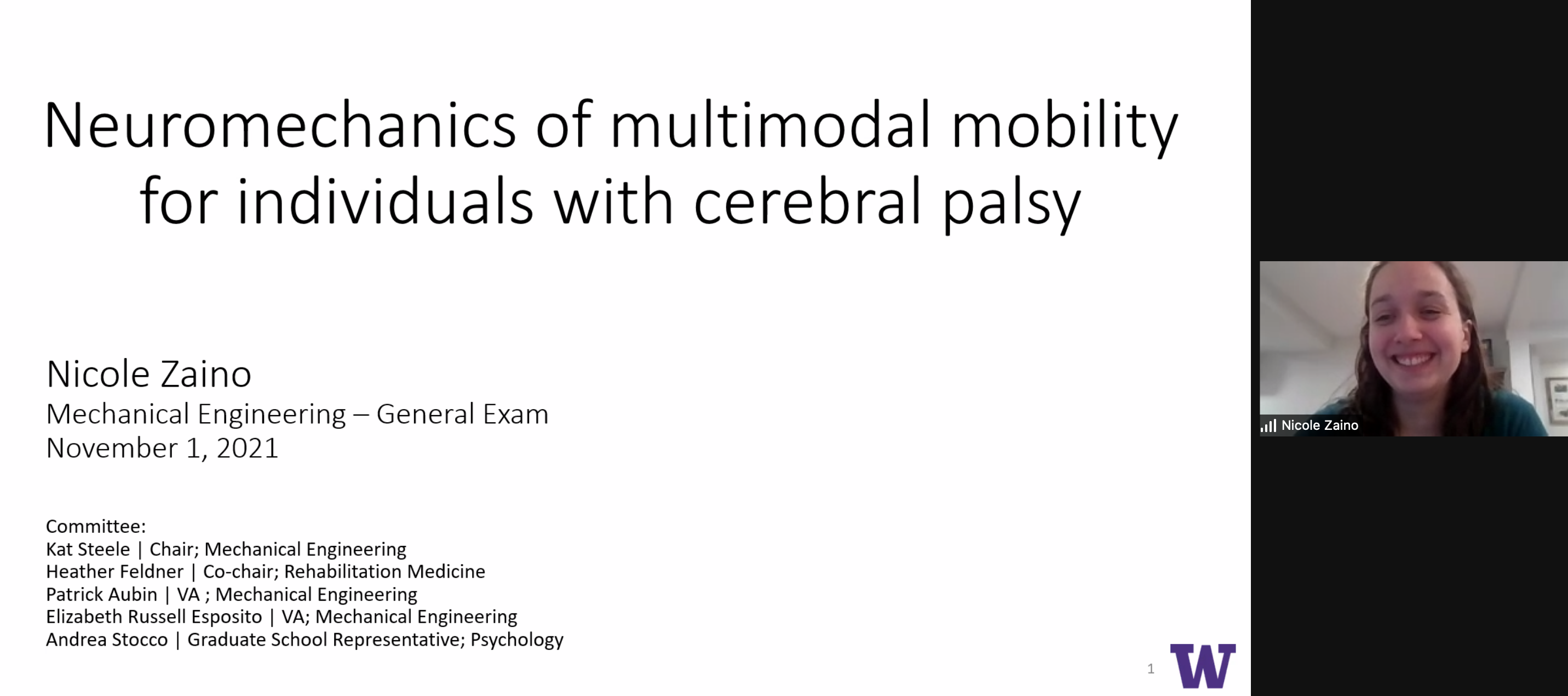 Congratulations to Nicole Zaino for passing her General Exam!
Congratulations to Nicole Zaino for passing her General Exam!
Nicole’s proposed work titled Neuromechanics of multimodal mobility for individuals with cerebral palsy was approved by her Ph.D. committee. Woot! Woot! Go Nicole!
 Congratulations to Michael Rosenberg for being awarded the Komor New Investigator Award at the 2021 Technical Group on Computer Simulation (TGCS) at ISB. This award is presented at each symposium to recognize the best paper by a new investigator. Way to go Michael!
Congratulations to Michael Rosenberg for being awarded the Komor New Investigator Award at the 2021 Technical Group on Computer Simulation (TGCS) at ISB. This award is presented at each symposium to recognize the best paper by a new investigator. Way to go Michael!
 The College of Engineering Awards acknowledges the extraordinary efforts of the college’s teaching and research assistants, staff, and faculty members. Momona Yamagami was selected for the 2021 Student Research Award. Congratulations Momona!
The College of Engineering Awards acknowledges the extraordinary efforts of the college’s teaching and research assistants, staff, and faculty members. Momona Yamagami was selected for the 2021 Student Research Award. Congratulations Momona!
Momona Yamagami is an innovative researcher who focuses on developing novel accessible technologies with translational impact. In her first year, she helped build an interdisciplinary research program that blended neuroengineering, human-computer interaction and rehabilitation at the Amplifying Motion and Performance (AMP) Lab to evaluate and mitigate symptoms of Parkinson’s disease using virtual reality. Dedicated to building accessible and inclusive technology, she is working to apply control theory and artificial intelligence to improve device accessibility for people with and without limited motion.
“Momona is a truly exceptional student with a demonstrated history of leadership in research and education. We cannot wait to see where Momona steers her career trajectory and research contributions.”